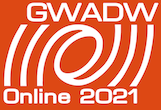Speaker
Description
The Einstein Telescope (ET) is an advanced, third generation gravitational wave observatory, currently in the planning stage in Europe. The ET project involves construction of a triangular shape underground facility with 10 kilometres long arms. The border region between the Netherlands, Belgium and Germany is considered as a potential location and will be further investigated in a feasibility study funded by the EU, the Dutch Ministry of Economic Affairs, the State of North Rhine-Westphalia, the Province of Flemish Brabant, the Province of Belgian Limburg, the Province of Dutch Limburg, Flanders and Wallonia.
Stable underground conditions with minimal ambient noise are essential for the interferometers to be hosted in the caverns of the ET corner points. A detailed geological, structural, hydrogeological and geotechnical model is required to ensure the desired performance of the underground infrastructures. The current multi-disciplinary feasibility study (E-TEST) allows to collect the required data to (1) optimise the location and orientation of the ET triangle and corner points, (2) plan the construction of subsurface caverns and tunnels, (3) construct a sophisticated, three-dimensional, cross-border geological model of the study area and (4) establish new surveillance methods. This presentation provides a short overview on the geological exploration targets and methods used in the feasibility study E-TEST.

